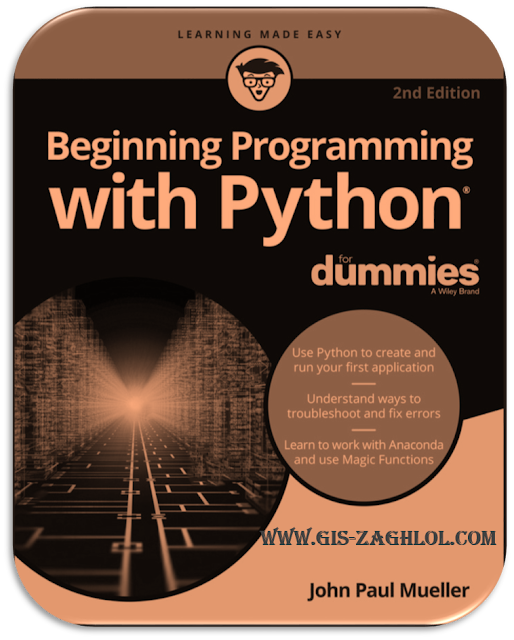تحميل كتاب بدء البرمجة باستخدام بايثون Beginning Programming with Python pdf
تحميل كتاب بدء البرمجة باستخدام بايثون Beginning Programming with Python pdf ، استكمالا لسلسلة تعلم بايثون للمبتدئين learn python نقدم لكم في هذه المقالة كتاب بدء البرمجة باستخدام بايثون Beginning Programming with Python pdf ، من إعداد John Paul Mueller .
Introduction the book Beginning Programming with Python pdf
Python is an example of a language that does everything right within the domain of things that it’s designed to do. This isn’t just me saying it, either: Programmers have voted by using Python enough that it’s now the fifth-ranked language in the world (see https://www.tiobe.com/tiobe-index/ for details). The amazing thing about Python is that you really can write an application on one platform and use it on every other platform that you need to support. In contrast to other programming languages that promised to provide platform independence, Python really does make that independence possible. In this case, the promise is as good as the result you get.
Python emphasizes code readability and a concise syntax that lets you write applications using fewer lines of code than other programming languages require.You can also use a coding style that meets your needs, given that Python supports the functional, imperative, object-oriented, and procedural coding styles (see Chapter 3 for details). In addition, because of the way Python works, you find it used in all sorts of fields that are filled with nonprogrammers. Beginning Programming with Python for Dummies, 2nd Edition is designed to help everyone, including nonprogrammers, get up and running with Python quickly.
Getting Your Own Copy of Python
Creating applications requires that you have another application, unless you really want to get low level and write applications in machine code — a decidedly difficult experience that even true programmers avoid if at all possible. If you want to write an application using the Python programming language, you need the applications required to do so. These applications help you work with Python by creating Python code, providing help information as you need it, and letting you run the code you write. This chapter helps you obtain a copy of the Python application, install it on your hard drive, locate the installed applications so that you can use them, and test your installation so that you can see how it works.
Accessing Python on Your Machine
After you have Python installed on your system, you need to know where to find it. In some respects, Python does everything it can to make this process easy by performing certain tasks, such as adding the Python path to the machine’s path information during installation. Even so, you need to know how to access the installation, which the following sections describe.
Interacting with Python
Ultimately, any application you create interacts with the computer and the data it contains. The focus is on data because without data, there isn’t a good reason to have an application. Any application you use (even one as simple as Solitaire) manipulates data in some way. In fact, the acronym CRUD sums up what most applications do:
- Create
- Read
- Update
- Delet
If you remember CRUD, you’ll be able to summarize what most applications do with the data your computer contains (and some applications really are quite cruddy). However, before your application accesses the computer, you have to interact with a programming language that creates a list of tasks to perform in a language the computer understands. That’s the purpose of this chapter. You begin interacting with Python. Python takes the list of steps you want to perform on the computer’s data and changes those steps into bits the computer understands.
- Opening the Command Line
Python offers a number of ways to interact with the underlying language. For example, you worked a bit with the Integrated DeveLopment Environment (IDLE) in Chapter 2. (In Chapter 4, you begin seeing how to use a full-featured Integrated Development Environment, IDE, named Anaconda.) IDLE makes developing fullfledged applications easy. However, sometimes you simply want to experiment or to run an existing application. Often, using the command-line version of Python works better in these cases because it offers better control over the Python environment through command-line switches, uses fewer resources, and relies on a minimalistic interface so that you can focus on trying out code rather than playing with a GUI.


ممتاز جدا
ردحذف